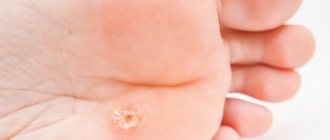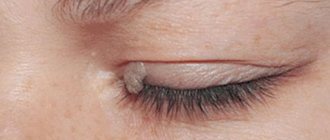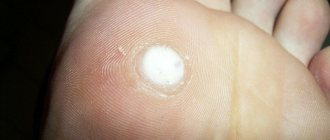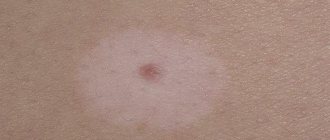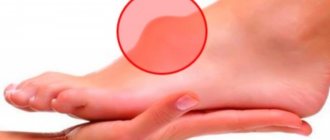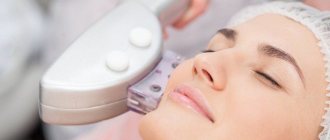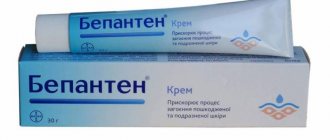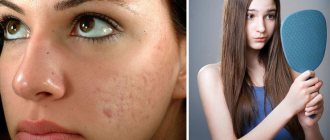Everyone wants to look young and attractive, but often the imperfections in our skin make us feel ashamed of our appearance. However, age-related skin changes, scars, scars and stretch marks after pregnancy, acne scars on the face - all this, one way or another, happens to everyone. “Miracle creams” from magazine pages cannot always really solve the problem, so it is worth thinking about other options, in particular, turning to modern advances in dermatology and cosmetology for help.
A scar is the final stage of healing of deep defects of the skin or mucous membrane, which were caused by physical (cuts, ruptures, surgical incisions), chemical (burns with caustic substances), biological (rash with destruction of the deep layers of the skin, caused by various microorganisms, protozoa, helminths, and etc.) factors causing the development of scar tissue at the site of the defect.
Post-acne scars are most often the result of a severe form of acne and occur in approximately 30% of people who have had acne. The basis of this phenomenon is that the body replaces areas of skin destroyed by acne with connective tissue, which is harder than the surrounding area. Scars do not disappear on their own and require special therapy.
When will the procedure be effective?
Let's first talk about in what cases laser scar resurfacing is most relevant. In order to answer this question, it is necessary to clarify the nature of the occurrence and the specific type of scars. So, it is customary to highlight:
- Hypotrophic scars. They are depressions on the surface of the skin. Most often they appear as a result of a previous illness, for example, chickenpox with complications.
- Normotrophic scars. They are flat scars that blend into the skin. They are characterized by altered structure, density and appearance, and have a whitish or pinkish color. As a rule, they arise as a result of mild mechanical trauma and respond well to treatment in the early stages of occurrence.
- Hypertrophic scars. Form an elevation above the surface of the skin. The main cause of their occurrence is considered to be extensive, deep damage to the skin (for example, keloid scars).
Laser resurfacing can be indicated for any type of scar, from the simplest to the most complex. Feedback from experts indicates that the feasibility of such a technique is quite high in all of these cases. In addition, the correction allows you to eliminate stretch marks, unevenness, increased porosity and density.
The most important advantage of the laser is the ability to remove colloid and keloid scars. Both of these phenomena are caused by severe mechanical trauma and improper wound healing. Such formations cannot be treated with cosmetic methods, but can be eliminated through aesthetic medicine and surgery.
Keloid scar
Keloid scars are considered to be a type of hypertrophic scars; they have similar, but more pronounced characteristics:
- elevation above the surface of the skin;
- significant size;
- moderate pain in the first time after appearance;
- bluishness of the affected area or a pinkish-red tint;
- heterogeneous, lumpy structure.
As for colloidal formations, their distinctive features are a reddish or bluish color, pain, and slow progressive growth in size. In addition, there are no sweat glands or hairs at the site of colloidal scars.
Basic principles of laser exposure
Laser scar resurfacing involves a comprehensive elimination of the existing problem. The specialist sets the basic parameters of the beam, its intensity and depth, due to which the effect obtained acquires the necessary accuracy and strength.
Scheme of the effects of laser resurfacing
The positive changes occurring in damaged skin are explained by:
- softening the scar by eliminating damaged cells;
- stimulation of internal renewal, enhanced production of collagen, elastin and other beneficial substances for healing and regeneration of the skin.
Opinion of cosmetologists
Laser facial resurfacing for scars is approved by experts - they note the rapid effect of the procedure. However, in the presence of numerous deep defects, in order to achieve the most aesthetic results, it is recommended to combine this technique with other correction methods.
Laser Types
Laser scar resurfacing can be performed using two methods. Both techniques share a common operating principle, but this is where their common features end. It is customary to highlight:
- Erbium laser . Reviews from many experts contain the opinion that such a solution is a relic of the past. It is characterized by an insignificant penetration depth (up to 1 micron) and rapid action. After its use, certain side effects may occur, and healing takes an extremely long time. The erbium fractional laser is one of the varieties of this technique, it is even considered more advanced, but it can also provoke local bleeding.
- Carbon dioxide laser (CO2). Belongs to the category of the latest developments. It has a significant penetration depth (up to 20 microns), a pronounced effect, and additional positive properties (seals the skin). Setting the necessary parameters is the direct prerogative of the specialist.
How does the laser scar removal procedure work?
Before the session, the cosmetologist examines the problem area and determines the appropriate type of treatment. The procedure in question is classified as painless. But taking into account the different sensitivity of the skin, before laser exposure, the patient is anesthetized in the affected area. Anesthesia is used as an exception to the rules, in severe cases.
At the next stage, the scar layer is removed with a laser beam. The intensity of the impact and the power of the beam are determined by a special program, and the entire process is adjusted on a computer. The processing process lasts from 20 to 40 minutes.
The principle of laser therapy for facial skin
The session ends with moisturizing the epidermis with a soothing cream. At this stage, the dermis requires moisture replenishment to restore water balance.
Main stages of the procedure
Laser scar removal is carried out in several stages. It may take 2 to 10 sessions to achieve the desired results. The break between procedures should be approximately 3-4 weeks.
One visit to the doctor usually does not take more than 40 minutes. During this time, the specialist administers local anesthesia and, if necessary, gives general anesthesia (for complex and large scars). As soon as the anesthesia begins to take effect, the parameters are programmed and the problem area is treated. During the evaporation of damaged cells, a slight burning sensation is felt; after the manipulations are completed, the patient can immediately return to their usual activities.
What devices are used
Facial scar removal is performed using two methods:
- Erbium laser is the most common option. Used for classic exfoliation to improve skin health and eliminate defects. Helps improve blood circulation and synthesis of new cells.
- Neodymium - with the help of this device, grinding can be carried out pointwise, acting directly on the problem area. The beam penetrates to a depth of 2 mm, which ensures the safety of the procedure and prevents tissue burns. Effective against scars of varying severity.
Buyanov Sergey Yurievich (Expert Doctor):
The difference between erbium and neodymium lasers in practical terms lies in the depth of penetration of the laser beam. For eribium it is from one to eight millimeters, for neodymium it is no deeper than 0.5 mm.
Side effects and recovery
Skin restoration occurs quite quickly; some side effects may be observed in the first day after exposure. These include:
- moderate pain (can be relieved with any painkiller tablet);
- burning;
- redness;
- slight swelling;
- the appearance of a crust on the wound.
No special care is required. Try not to wet the wound, spend less time in the sun, avoid getting dirt or sweat on the affected area, and do not use cosmetics to treat this area.
Healing period
Rehabilitation after laser resurfacing lasts several weeks. During the first, the process of skin renewal occurs, it is accompanied by:
- redness;
- swelling;
- formation of blisters, crusts;
- intense peeling.
These symptoms are a normal reaction of the body and go away on their own within a few days. To speed up tissue healing, it is recommended to adhere to a number of rules:
- completely stop using decorative cosmetics for one week;
- on the first day, it is forbidden to touch your face with your hands;
- starting from the second day, you are allowed to wash your face with cool water using delicate products and wipe with antiseptics;
- for two to three weeks, refrain from visiting the bathhouse, sauna, or swimming pool;
- do not swim in open waters;
- do not engage in sports or heavy physical labor;
- To avoid hyperpigmentation, use sunscreen with an SPF filter of at least 30 before each trip outside;
- if you experience pain, take analgesics prescribed by a cosmetologist;
- sunbathing in the open sun and in a solarium is prohibited for two months;
- cosmetic procedures are allowed only after completion of the recovery period;
- To normalize fluid balance, it is recommended to drink at least 1.5 liters of water daily.
Please note! Alcohol and tobacco smoke slow down the regeneration processes, so it is advisable to stop drinking alcohol and smoking, at least for a few days.
Contraindications
Laser scar resurfacing also has certain disadvantages, including the presence of a number of mandatory contraindications. Fortunately, there are very few such restrictions and most patients have the opportunity to attend this effective procedure. The list of contraindications includes:
- skin diseases in the acute stage (psoriasis, herpes and others);
- oncology;
- diseases of the circulatory system;
- diabetes;
- feeding newborns with breast milk;
- pregnancy.
Advantages and disadvantages
| Advantages | Flaws |
|
|
Advantages of the technique
To make a decision on the feasibility and necessity of laser correction, we will specify the main advantages of the technique. Significant advantages include:
- the ability to work with even the most complex cases;
- significant result;
- minimum side effects and contraindications;
- lack of special care after the procedure;
- no effect on healthy tissue;
- the ability to eliminate formations in the face and body;
- skin disinfection, bloodless contact.
Benefits of Laser Scar Removal
Laser scar removal is a modern cosmetic procedure with a number of advantages. The obvious advantages of the technology include:
Example of scars without any treatment and after laser treatment
- universality - the procedure is indicated for both light-skinned and dark-skinned people;
- all known skin defects are easily eliminated;
- healthy tissues are not subject to laser correction;
- the effect is carried out without preliminary treatment of the skin;
- the visual effect is noticeable a few minutes after completion of the procedure;
- Scars can be easily removed even in the most delicate places.
You can return to your daily activities within 1-2 hours, provided that the work was carried out by a professional cosmetologist.
Efficiency of the procedure
Dermatologists state that in today's realities, laser removal of scars and scars is recognized as the most effective approach to getting rid of skin defects. The impressive effectiveness of the procedures is due to the principle of influencing the problem area: a light beam is directed to the damaged epidermis and activates collagen synthesis at the cellular level.
The laser activates collagen synthesis, due to which the epidermis is more actively renewed
Collagen displaces the scar layer, replacing it with renewed and completely healthy skin.
Photos before and after
Photos before and after No. 1
Photos before and after No. 2
Photos before and after No. 3
Laser resurfacing price
Laser scar correction is a rather expensive procedure; the final price of the treatment is determined based on several factors. Among them:
- size, type and complexity of education;
- the methodology used (fractional, carbon dioxide, etc.);
- Availability of additional services (anesthesia, consultation).
The answer to the question of how much scar removal costs is as follows - on average, about 1000 rubles per square centimeter.
